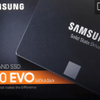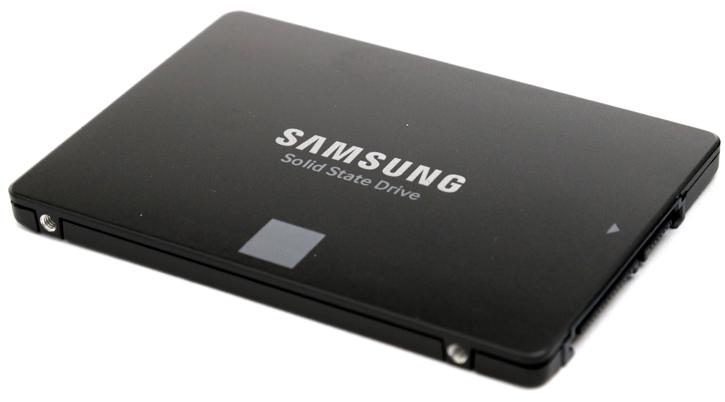Introduction
The Samsung 860 EVO SSD (2 TeraBytes)
Mainstream goes up on volume
Samsung unleashes its new 860 EVO series SATA 6 Gb/s SSDs. The new revision is fabbed with 64-cell layer V-NAND and their new MJX controller. Armed with proper SATA3 performance and interesting pricing, Samsung will once again set the tone. By using 64-layer vertically stacked NAND they are now able to fab even larger SSDs, in fact, up to a whopping 4 Terabytes. Don't worry though, it'll be a wide spread of products ranging from 250 GB, 500 GB, 1 TB, 2 TB and thus 4 TB. We will check out the new 2 TB version.
Going with 64-cell layer MLC V-NAND
As you guys know, we've been testing NAND Flash based storage ever since the very beginning, and it is surprising to see where we have gotten. The SSD market is fierce and crowded though. While stability and safety of your data have become a number one priority for the manufacturers, the technology keeps advancing at a fast pace, as it does the performance numbers a good SSD offers these days are simply breathtaking! You get between 450 MB/s to 500 MB/sec on SATA3 which is the norm for a single controller based SSD. Next to that, over the past year, NAND flash memory (the storage memory used inside an SSD) has become much cheaper as well. Prices a year ago settled at just under 1 USD per GB. That was two to three-fold two years ago. These days a good SSD can be found under 40 cents per GB. With parties like Samsung, Toshiba and Micron the prices have now dropped towards and below the 30 cents per GB marker. This means that SSD technology and NAND storage have gone mainstream and, due to the lower prices, the volume sizes go up as well. A couple of years ago a 64 GB SSD was hot stuff, then slowly we moved to 120 GB, last year 240 GB for an SSD in a PC was the norm, this year we'll transition to 500 GB per SSD as the default norm with corresponding prices. With the market being so huge, fierce and competitive, it brought us to where we are today, nice volume SSDs at acceptable prices with very fast performance. Not one test system in my lab has an HDD, everything runs on SSD while I receive and retrieve my bigger chunks of data from a NAS server here in the office. The benefits are performance, speed, low power consumption and no noise.
- New Samsung MJX Controller: faster and more accurate – operates at up to 1 GHz vs 550 MHz last gen
- Intelligent TurboWrite Improvements: Up to 4 GB dedicated LPDDR4 cache memory, ability to allocate up to 78 GB of TurboWrite region (6x compared to 850 EVO)
- Best in class endurance: Up to 2,400 TBW (8x compared to 850 EVO)
- Available in 250 GB, 500 GB, 1 TB, 2 TB and 4 TB
Samsung's 860 EVO and Pro SSD product line is powered by the company’s latest iteration NAND controller, now at revision MJX. A controller with a low power design, this drive will be amongst the fastest SATA3 models ever tested, no matter what the workload is. It’s not just about performance though, it is about endurance as well. In a nutshell, endurance is the number of program-erase cycles an SSD has before you can't write onto it anymore, our tested 2 TB model can manage 1200 TB of writes before cells die off, you may halve that by volume size. That means a 500 GB drive can manage 300 TB of writes. IOPS numbers are reaching the familiar 90,000 to 100,000 marker. Overall, the 860 series performance is maxed out at whatever your SATA3 interface can handle. Sequential reads performance wise are 550 MB/s and write performance is set at 520 MB/s (sequential writes). Samsung guarantees the 500 GB 860 EVO for 5 years or the TBW value, we'll list that on the following pages though. Have a peek at the more budget-friendly 860 EVO, after which we'll dive into a rather in-depth review.


